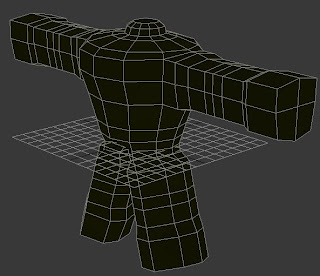That always bothered me about the Garden of Eden parable... wouldn't God want his children to reach for their fullest possible potential?
I think perhaps it's a reflection of Oedipal fear - that the child will grow to be stronger than the Father, and kill him and take his wife.....
In any case - you -
you - you are a man. A man driven by a desire not for gold, or women, or hunger - but a desire to be the best that you can possibly be. To reach the maximum of your human potential.
During your childhood - this desire made you a prodigy, a boy who stood out amongst his peers as an individual who was
going places. But - as your intensity grew, so did your distance from your peers and the societal bonds that hold us all from reaching their full potential.
Tortured and exiled by your society for daring to exceed your own capabilities through socially unacceptable means, you journey into the world - to become the most powerful man you can be.
The scenario:
You are an exiled monk - a scholar and martial artist. After having your right arm severed as punishment for your pride, you are left to roam the world - in search of power - whatever form that may take.
In Scene 1 (initial release) - you resolve to seek out the Kings of the four seas (Chinese-styled dragons) - in order to ask their blessing and gain from them some knowledge that will increase your power.
By capturing the Pearl that each Dragon chases, you may ransom it back to the Dragon in exchange for power of your choosing.
Each level will consist of two phases:
- Chase the dragon from the ground, attempt to leap onto it's back - avoiding obstacles and building speed until you can successfully make the leap.
- Run along the dragon's back - assuring you are not thrown off, until you reach the head and can leap to claim the pearl.
At the culmination of these phases, you are given the choice of one power - be it increased speed, increased jumping ability etc.
At the culmination of all phases, you will be granted your lost arm, and may begin your path to Martial Arts glory.
That's the thought, in any case.
And, in classic style, here's a drawing I made while I got distracted designing a UI communication system for my rent-paying job.
He's clearly got two arms there......
That's the thought, at this point in time. Story may or may not change over the coming weeks - but will be locked (obviously) by the time design and modelling begin.
Thoughts? Feelings?
By summary, the gameplay will be:
- Run run run!
- Jump jump jump!
- Avoid stopping!
By even more abstract summary, the gameplay will be:
Simplicity.
And then we'll see how the iPhone performs and grow from there.









